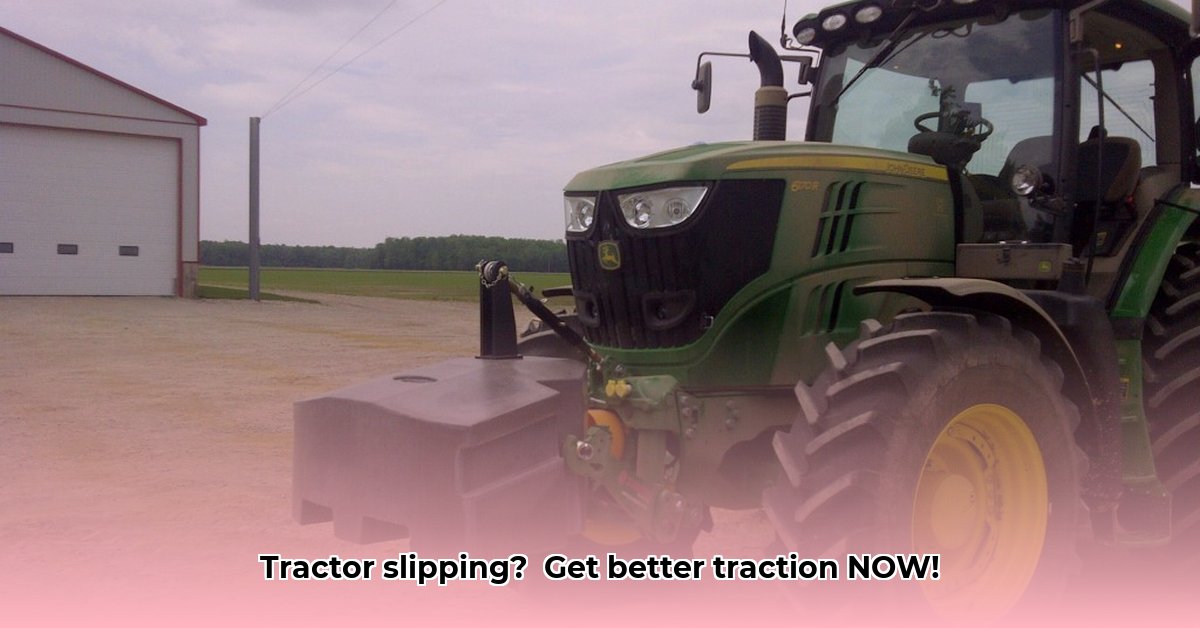
Understanding Front Tractor Weights: A Comprehensive Guide
Adding front tractor weights significantly enhances traction and stability, especially when dealing with heavy loads or challenging terrains. This improvement translates directly to increased productivity and reduced risk of accidents. However, choosing the right weights can be daunting. This guide provides a comprehensive overview of various weight types, a comparative analysis of leading brands, installation instructions, and maintenance tips to ensure optimal tractor performance. For information on rear tractor weights, see this helpful resource: Rear Tractor Weights.
Types of Front Tractor Weights
Several types of front tractor weights are available, each with its own advantages and disadvantages:
Suitcase Weights (Cast Iron Blocks): These are individual, easily attachable and detachable blocks. They offer versatility and are generally cost-effective, making them ideal for lighter tractors or tasks requiring occasional weight adjustment. However, they can be cumbersome to handle, particularly heavier units.
Wheel Weights: These weights are directly bolted onto the tractor's wheels, providing superior stability and balanced weight distribution. They're less prone to shifting during operation compared to suitcase weights, enhancing safety. However, they are less versatile, and removal is more involved.
Liquid Ballast (Water or Fluid-Filled Tanks): These adjustable weights allow for precise weight alteration by adding or removing liquid. This offers great flexibility for adapting to varying conditions and loads. However, potential leakage and vulnerability to freezing temperatures are key considerations.
Choosing the Right Weight: Lonestar Weights vs. Taylor Foundry
Selecting the appropriate front tractor weight depends on several factors, including tractor model, intended application, and terrain type. Two prominent brands, Lonestar Weights and Taylor Foundry, represent the market's leading offerings.
While precise pricing information isn't readily available without direct contact, a comparison highlights key differences:
| Feature | Lonestar Weights | Taylor Foundry | Considerations |
|---|---|---|---|
| Weight Options | Wide range catering to various tractor sizes | Extensive range, strong emphasis on OEM replacements | Match weight to your tractor's capacity and needs. |
| Brand Compatibility | Broad compatibility across major tractor brands | Excellent compatibility across major tractor brands | Verify compatibility with your specific tractor model. |
| Pricing | Contact for current pricing | Contact for current pricing | Request quotes from multiple suppliers for comparison. |
| Special Features | Custom applications and color choices available | Focus on precision OEM replacements; custom options available | Consider customization needs and cost implications. |
| Material | Typically cast iron or steel | Typically cast iron or steel | Material choice impacts weight, cost, and durability. |
Both brands are reputable, offering a wide range to suit diverse needs. Taylor Foundry may have a slight advantage if OEM replacements are needed. However, direct price comparison requires contacting both companies.
Safe Installation and Maintenance
Improper installation is dangerous and can damage your tractor. Always follow these steps:
- Consult Your Owner's Manual: Verify weight capacity limits specific to your tractor model. Exceeding these limits is extremely hazardous.
- Safety First: Engage the parking brake, turn off the engine, and use appropriate lifting equipment to avoid injury. Never attempt to manually lift heavy weights.
- Secure Installation: Follow the manufacturer's instructions meticulously, ensuring all bolts, clamps, and fasteners are securely tightened.
- Stability Test: After installation, test the tractor's stability at low speeds, gradually increasing speed while carefully monitoring handling.
Regular maintenance extends weight lifespan:
- Periodic Inspection: Regularly check for cracks, rust, or damage. Address minor issues promptly to prevent major problems.
- Cleaning and Repainting: Clean and repaint weights, especially those stored outdoors, to protect against corrosion and extend their service life.
Conclusion: Maximize Tractor Performance Through Informed Weight Selection
Choosing the right front tractor weights is crucial for optimal performance and safety. Researching different brands, comparing options, and carefully following installation instructions ensures optimal results. Remember to always prioritize safety and consult your tractor's owner's manual for specific weight capacity limits. Regular maintenance safeguards your investment and ensures continued safe and efficient operation. Don't hesitate to contact manufacturers directly for clarification on specifications and pricing.